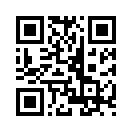Fast forward 10 years later. Myriad multitalented, multicultural and multilingual artists, including Shakira, Marc Anthony, Juanes and Enrique Iglesias and ushered in by Martin, have successfully crossed over into the English market with their rich and diverse rhythms, a reflection of so many cultures from throughout Latin America. And American corporations have discovered a natural yet powerful avenue to reach the fastest-growing market in the nation.
Today, more than ever, American brands are aggressively reaching out to Latino consumers by making Latin music and entertainment an integral part of their annual marketing initiatives, and that's evident from the growing number of Latin tours and programs sponsored by corporate giants such as Sprint (Juanes), State Farm (Billboard Latin Music Awards), AT&T ("Viva el Sueño," Univision's version of "American Idol"), and dozens more.
It's certainly been a long way since my start in the music business -- a series of Latin dances I organized for my fellow classmates at Northeastern Illinois University back in the 1970s -- and it's been encouraging to see the positive impact Latin music has had for many of my clients, who very early on realized this potential.
Using Latin music to reach your target market
The quest for the U.S. Hispanic market has several challenging aspects, but one of the biggest is knowing how to reach each and every one of them, as it actually has many markets that are divided by nationality, level of English proficiency and degree of acculturation. Most Latino ethnicities might speak the same language, but the music of Mexico, Colombia, Puerto Rico, and the Dominican Republic all differ significantly.
Music is an integral part of Latinos, much like food, and, like food, it must be uniquely and carefully catered to the right audiences in the right places.
If a brand wants to reach the young, acculturated Mexican-Americans in Los Angeles, for example, it's probably going to book an environmentally conscious rock group like Camila or Mana. But if the goal is to reach educated and affluent consumers from the Caribbean or even South America, you might benefit from a performance by Juan Luis Guerra, a Dominican Republic-born singer/composer whose work is heavily influenced by merengue, bachata and other tropical beats that are more common in those specific geographic areas. And then you have a young group like Aventura -- whose "The Last" tour recently made Billboard's Hot Tours list for the first time ever, ranking No. 3 after Miley Cyrus and Britney Spears. Its urban, pop and hip-hop rhythms are so varied that they can reach mass audiences in New York, Chicago, Boston and Miami alike.
Here are some of the potential benefits of sponsoring a Latin music tour or show:
- Exposure to a niche Hispanic group -- one that bodes well with a specific brand
- Association with some of today's most influential artists
- Alternative to big festivals, where your message may get lost
- Additional media exposure (inclusion in media plan, press events, signage, etc.)
- Unique consumer/fan opportunities to interact with a specific brand. It's not just free tickets anymore (e.g., three-week, pre- retail promotion for meet-and-greet passes, integrated and sponsored photo opportunities and sweepstakes)
- Caliber of events and artists involved in sponsorships including Grammy Award-winning artists such as Chayanne, Mana, Carlos Vives and Ana Gabriel
Ultimately, the biggest benefit is that your brand will connect with your target consumers through music in an emotional way. It's experiential, and it can be more effective than simply placing an ad in a newspaper or a spot on the radio.
| Henry Cardenas is an entertainment impresario and CEO of one of the leading national multicultural event marketing agencies, Cardenas Marketing Network. Throughout his 30+ years in the industry, he has designed and directed experiential marketing campaigns for Fortune 500 companies using Latin music, including artist endorsements, and sports -- specifically, soccer -- as a platform to bring consumers face-to-face with brands. Reach him here. |













